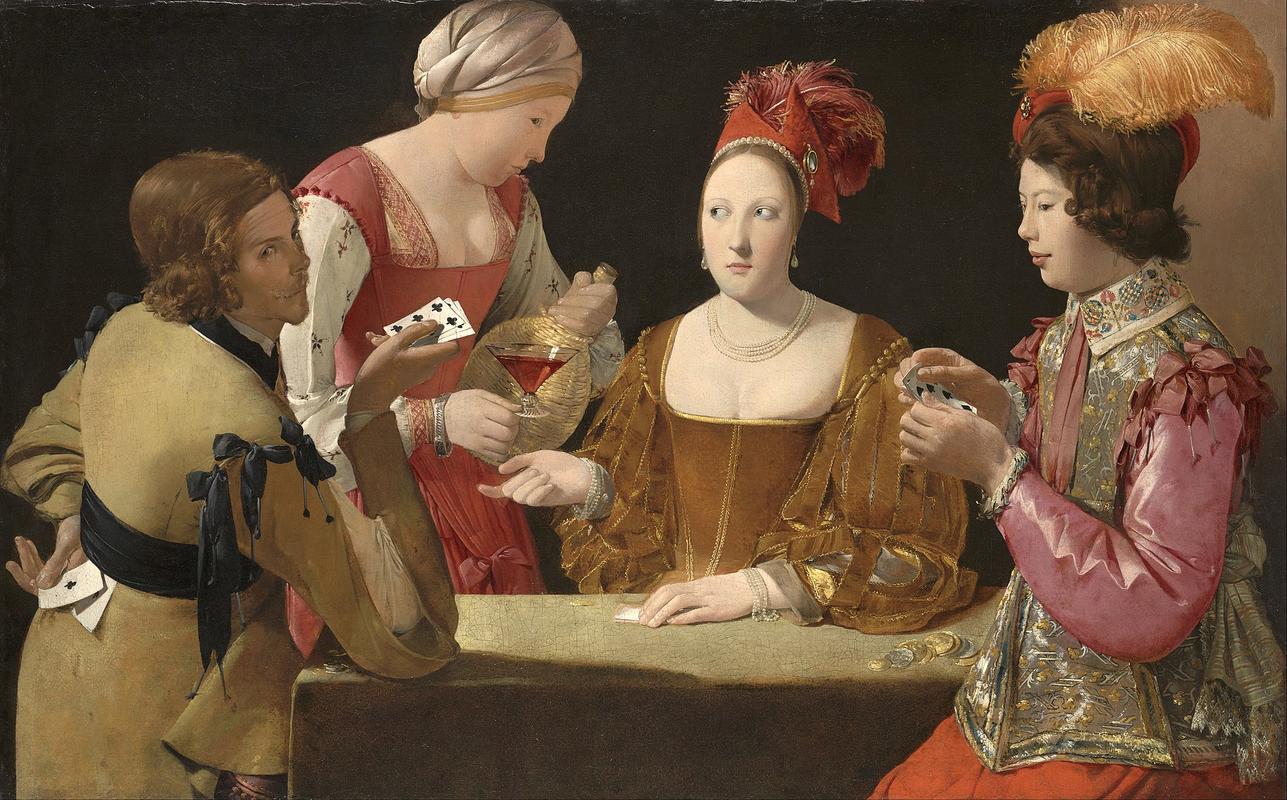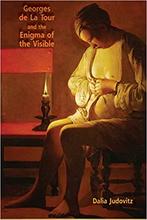More about The Cheat with the Ace of Clubs
- All
- Info
- Shop

Contributor
The Cheat with the Ace of Clubs by Georges de La Tour warns us that if you play games with strangers, they will cheat you with the ace of clubs and you will die (or worse, lose all of your money).
The French “candlelight painter” enjoyed a certain amount of infamy in his hometown of Luneville. When he first moved there, people loved him and invited him to all their weddings. As he entered the crippling status of a rich, middle-aged man, though, things turned sour.
He filed lawsuits left and right, refused to donate to starving peasants, and one time even beat up a sergeant-in-arms. He also set his dogs loose on people’s vegetable patches. La Tour was a bully—which, naturally, gave him the right to lecture others on why they shouldn’t do bad things.
With intricately rendered details and a side-glance so severe that some Spanish doctors even diagnosed it as a muscular disorder, La Tour declares gambling and card-playing too dangerous a pastime to pursue. Two “autograph” versions of The Cheat exist, one with the Ace of Diamonds at the Louvre and one with the Ace of Clubs at the Kimbell Art Museum in Texas.
The subject matter of card sharping obviously finds its roots in Caravaggio’s similarly composed Cardsharps, although people generally agree that La Tour never actually met the famed Italian bad boy. Probably just learned about him through the grapevine.
The Cheat with the Ace of Clubs honestly looks like the beginning of a bad joke. A courtesan, a cheat with a mustache, and a rich boy are playing cards, when…and so on and so forth. Luckily for you, you connoisseur of fine humor (why else would you be here?), this painting has more than one joke. The literal joke is that which you see playing out right before you. A prostitute, recognized by her low cleavage line and whiter-than-Western-Jesus skin, slips a message to the serving lady who, presumably, will relay it to the man on the left.
The man gives us a sly glance, flashing us not only the cards he has on hand but also the ones he hides behind his back, ready to slip them into the deck at the right moment. Some historians even postulate that this guy, with his dashing yet rascally looks, could be La Tour’s self-portrait. This suggestion is pretty plausible when you consider that the other three faces resemble cookie-cutter copies and the cheat resembles an actual human being. How can we blame him? Thieving is sexy. (Oh wait, wasn’t this painting supposed to be about morals?)
Meanwhile, the totally oblivious rich boy, recognized by his ornate finery and Swiffer-duster hat, glances at his hand innocently.
Oddly enough, even though three of the four characters seem to be in cahoots with one another, none of them look at each other. The lack of eye contact detracts from the compatriot theme a little bit and reminds us that scoundrels, even when working together, will put their own gains as first priority.
As for the second joke, unfortunately, La Tour plays that one on you—the viewer. Ironically, you know everything the rascals have been planning, while the boy remains blind to his inevitable loss. You become complicit in the cheats’ scheme just by looking at the painting. You betray the boy by not telling him about his fate (shame on you!), while the painting betrays all the deceits that human passion can lead to.
People call the eyes the “window to the soul” and the face “a mirror of the soul,” but these shady characters have clearly set up their windows and mirrors to lead to somewhere else.
Sources
- Jones, Jonathan. "The Cheat, Georges de La Tour (c1635-40)." The Guardian. January 23, 2004. https://www.theguardian.com/culture/2004/jan/24/art.
- Dudar, Helen. "From darkness into light: Rediscovering Georges de La Tour." Smithsonian 27, no. 9 (December 1996): 74-83.
- Gouk, Penelope, and Helen Hills. Representing emotions: new connections in the histories of art, music and medicine. Farnham, England: Ashgate, 2010.
- Wilkin, Karen. "La Tour in Washington." New Criterion 15, no. 3 (November 1996): 23-29.
- Solomon, Deborah. "Art: La Tour's Flickering Genius." Wall Street Journal (New York City), November 13, 1996, Leisure & Arts sec.












